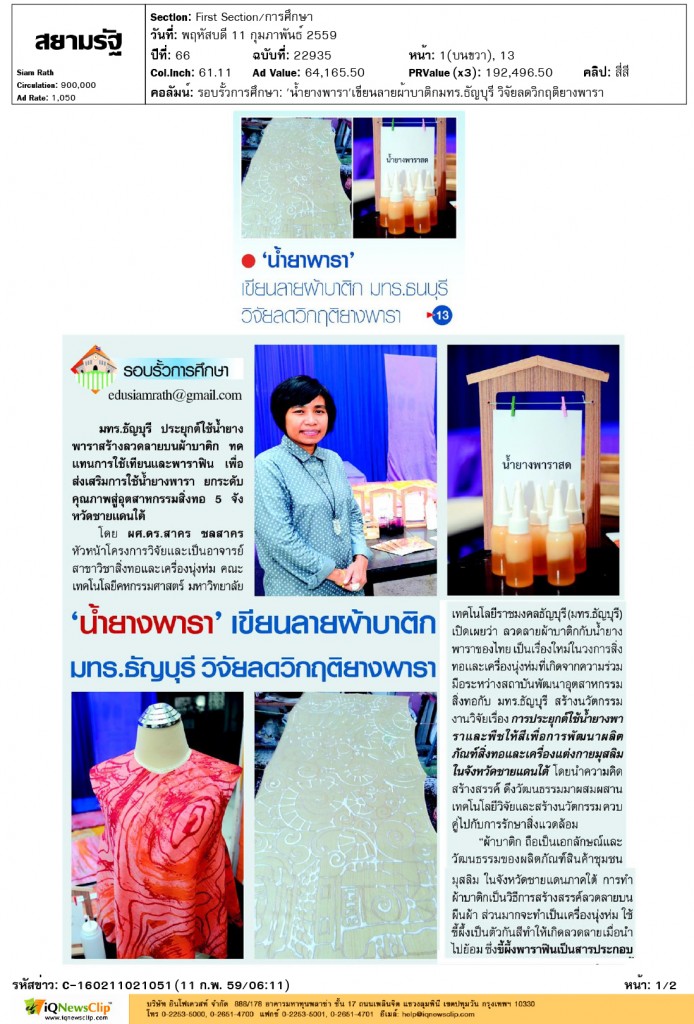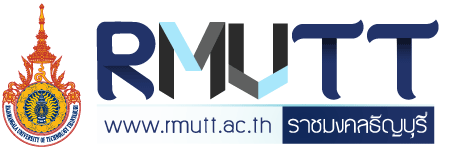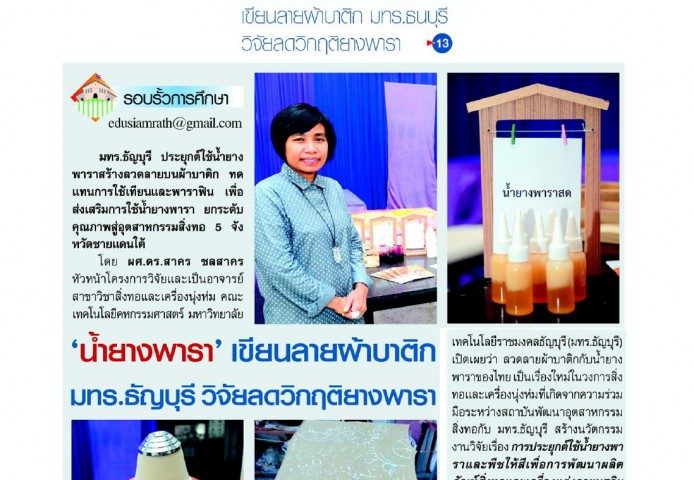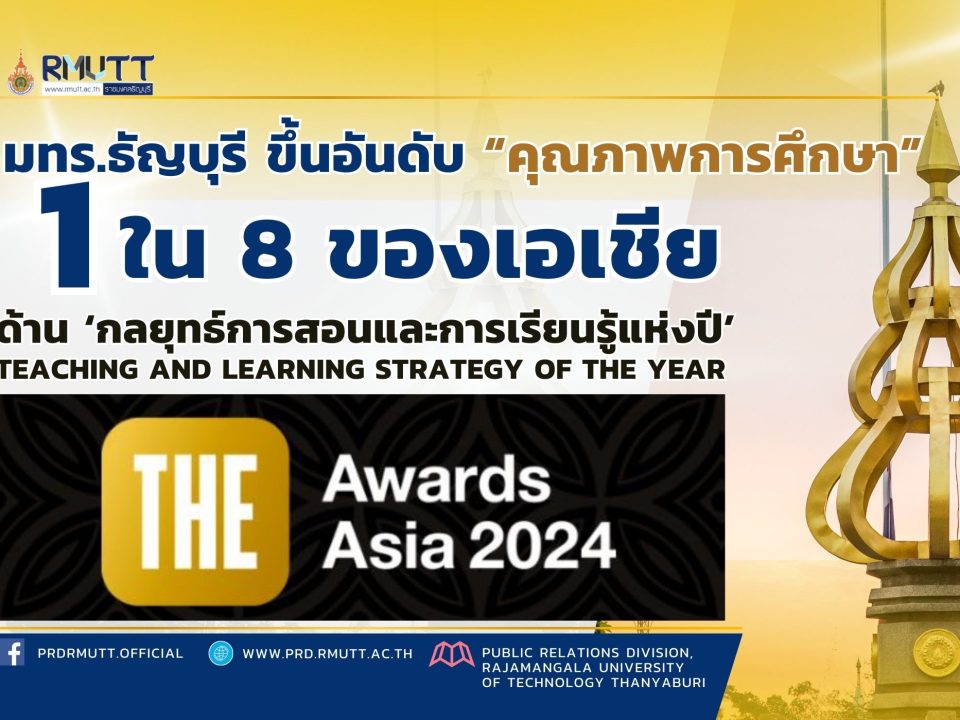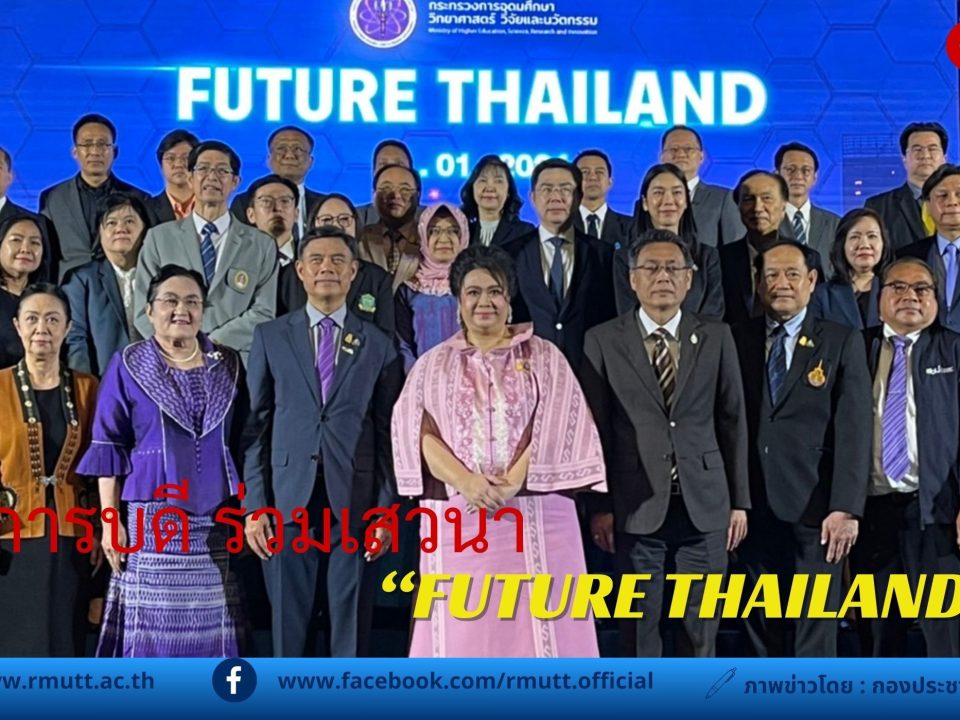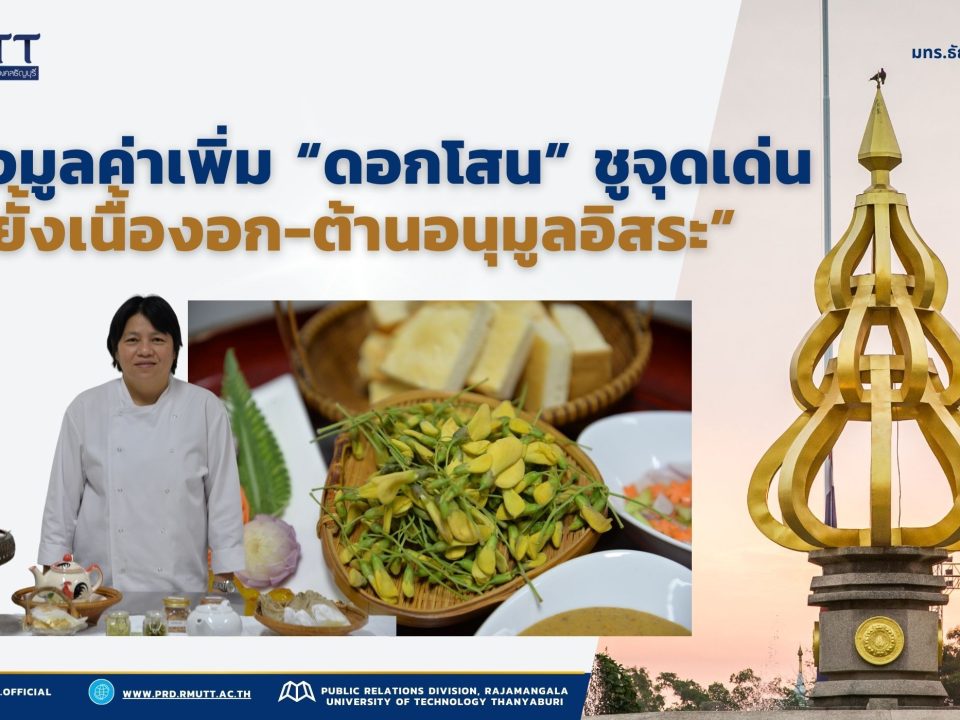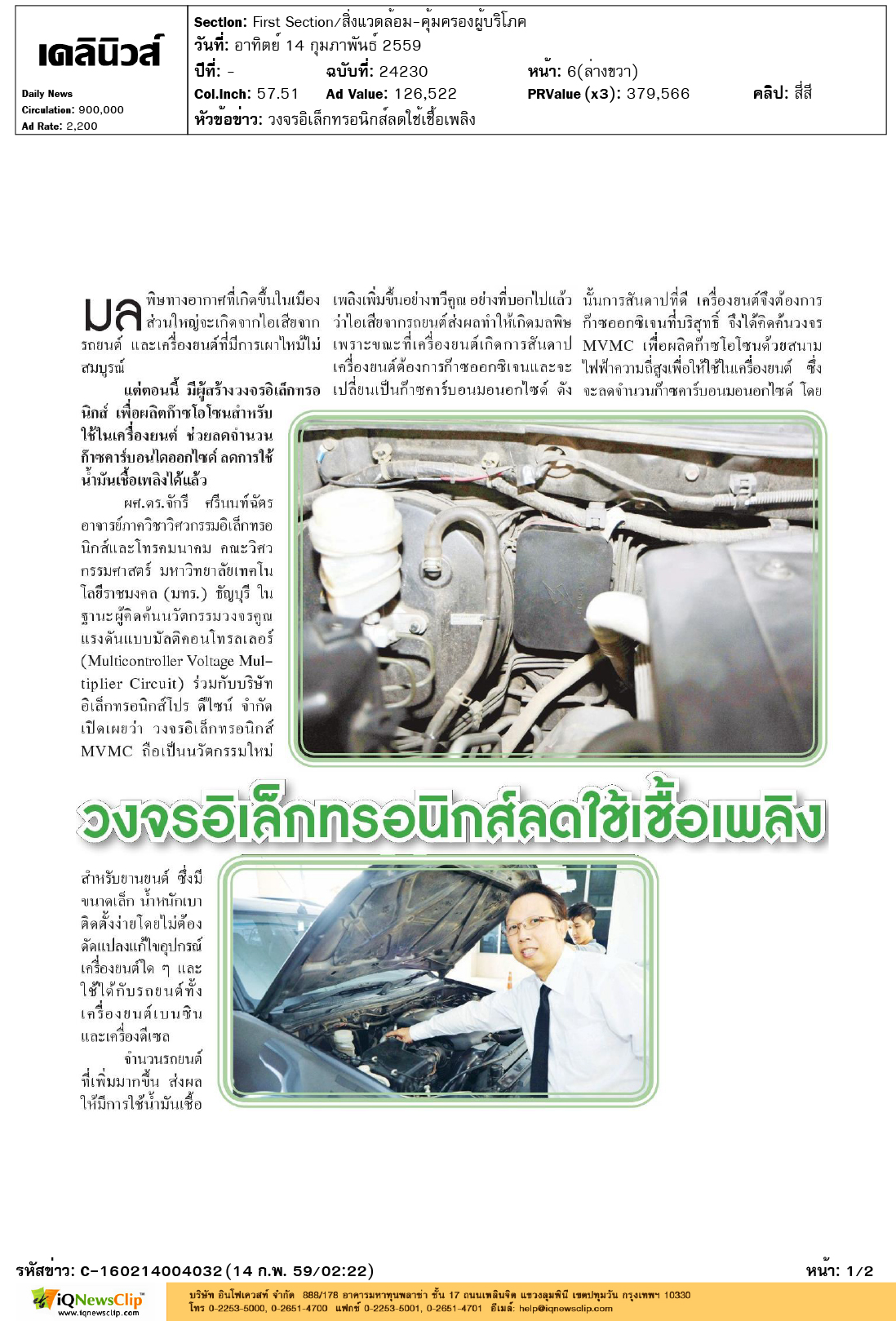
Using Electronic Circuits to Reduce Fuel Consumption
19/06/2016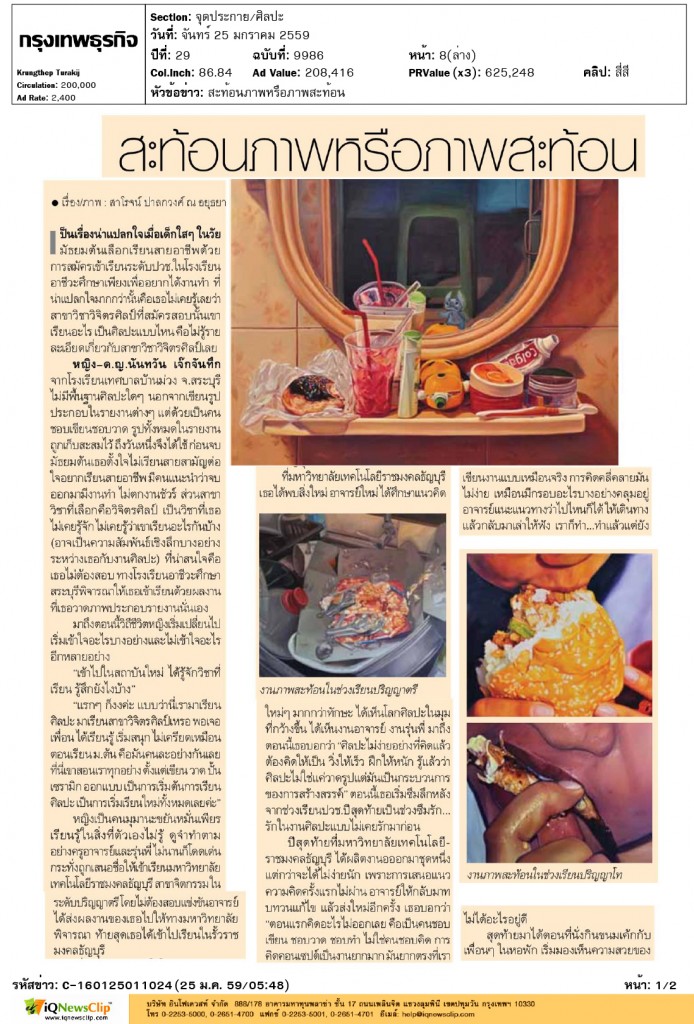
Reflection
19/06/2016RMUTT created patterns on batik with latex instead of candles and paraffin to promote the use of latex and enhance the quality of the textiles industry in the five southern border provinces.
Asst. Prof. Sakorn Chonsakorn, project leader and professor in the Department of Textiles and Apparel, Faculty of Home Economics Technology at RMUTT said that creating patterns on batik using Thai latex is new in the textiles and apparel industry. This innovative research was the result of collaboration between the Thailand Textile Institute and RMUTT. By bringing together innovative ideas and mixing it with culture, technology, research, and environmental concerns, latex and dye plants were applied to develop textile products and Muslim apparel in the southern border provinces.
“Batik is a unique product and culture of the Muslim community in the southern border provinces. Batik is a process of creating patterns on fabric, which are mostly apparel. Wax separates the colors and creates patterns after it is dyed. Paraffin wax is a type of hydrocarbon compound classified as petroleum wax, and is mostly imported, like colored chemical powder used for coloring. To reduce the use of candles, paraffin, and importing from abroad, raw materials such as latex, which are vastly produced annually, contain a high yield, and are the main cash crop in the southern border provinces, but are currently facing a continual price slump, were developed into fluids, to create patterns on batik. Moreover, local plants found in the five southern border provinces, such as rubber leaves, rubber barks, Langsat leaves, Mangrove barks, Neem barks, Torch Ginger flowers, Garcinia, and Muscat are used as dye” says Dr. Sakorn.
Latex used to create patterns on batik is comprised of latex mixed with glucose syrup and latex glue in the ratio of 2:4:1, which is much cheaper compared to the cost of paraffin wax. Additionally, RMUTT’s research team have also developed textiles and Muslim apparel for the five southern border provinces by designing and sewing five collections targeted for working age Muslim women. The Pattani province collection is comprised of gentle airy column dresses that depict the mentally strong but gentle character of Pattani people, and earth tone colors to represent significant architectural influences.
This innovative research is another admirable effort that is practical, creates jobs, and adds value to batik. It decreases chemical usage in order to improve the quality of the textiles and fashion apparel industry and is also another way to help drive the value of rubber and increase the amount of rubber usage in Thailand.
Painting Batik using Latex: Research to Mitigate the Rubber Crisis
